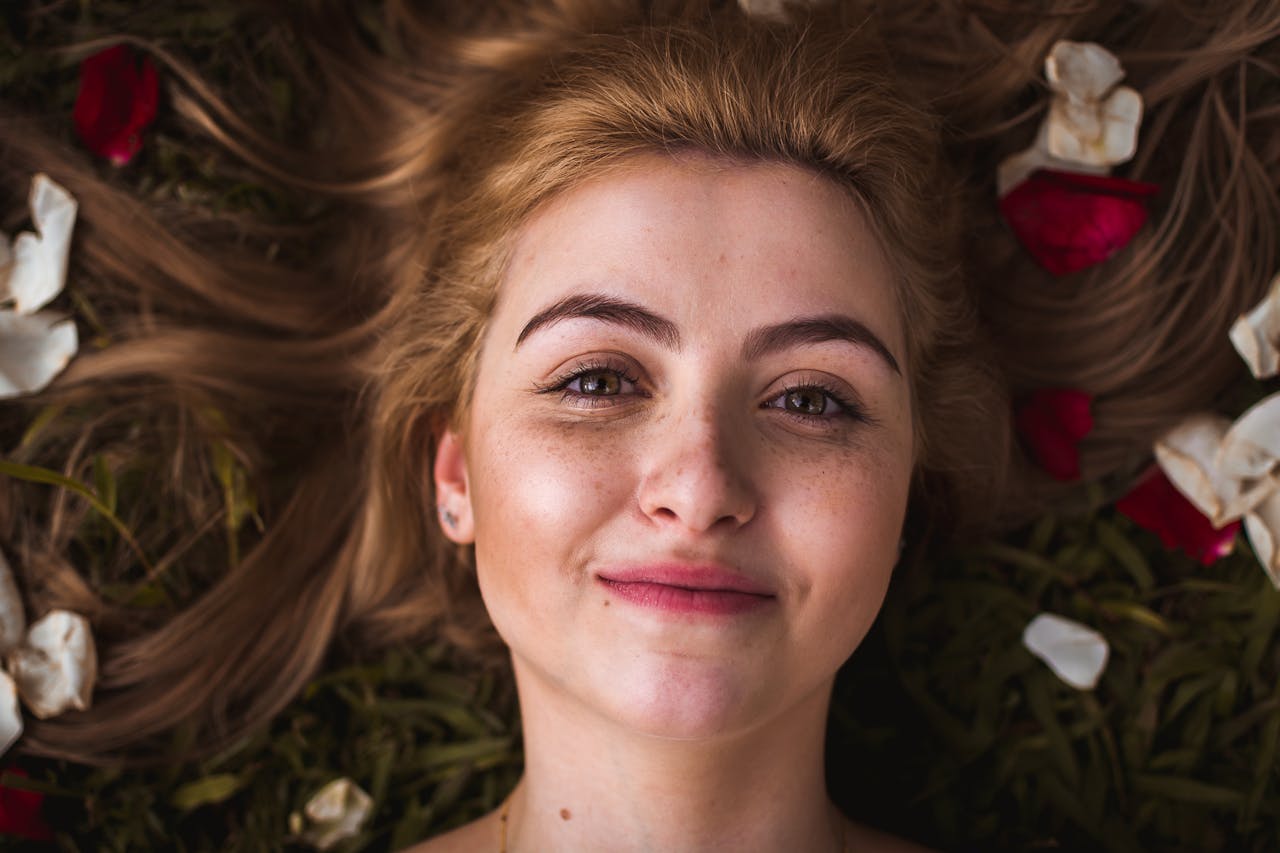Skin cycling has emerged as a skincare concept designed to optimize the health and appearance of the skin by alternating skincare regimens. The aim is to balance active ingredients that enhance skin renewal with recovery periods to prevent overexertion of the skin. Pioneered by dermatologist Dr. Whitney Bowe, skin cycling involves a systematized approach wherein different nights are dedicated to various treatments, typically over a three-to-five-night rotation.
This skincare routine begins with exfoliation to remove dead skin cells and improve the skin’s texture, followed by a night of retinoid application to stimulate collagen production and accelerate cell turnover. Subsequent nights are reserved for recovery, during which moisturizers and hydrating agents support the skin’s barrier and promote healing. The methodical nature of skin cycling makes it accessible to a wide audience, with the flexibility to suit different skin types and concerns.
Adoption of the skin cycling routine has seen a rise in popularity, particularly on social platforms like TikTok, as users seek streamlined approaches to their skincare. By allowing rest periods, skin cycling reduces the risk of irritation and sensitization often associated with the overuse of potent skincare actives. Its simplicity and cost-effectiveness add to its appeal, making it a viable option for those looking to enhance their skincare protocol without overwhelming their skin or budget.

I am a Nurse Practitioner licensed across multiple states, with experience in cardiology, nephrology, and family medicine. My current focus is on primary care, where I advocate for a holistic approach to healthcare, often recommending functional medicine to patients when suitable.
Concept of Skin Cycling
Skin cycling is a strategic skincare routine, involving a rotation of active ingredients to optimize skin health benefits while minimizing irritation. Pioneered by Dr. Whitney Bowe, it typically encompasses a sequence of exfoliation, retinoid application, recovery, and rests over a three-to-five-night cycle.
Typical Skin Cycling Schedule
- Night 1: Exfoliation to remove dead skin cells
- Night 2: Retinoid use to encourage cell turnover and collagen production
- Nights 3 & 4: Recovery phase focuses on moisture and repair
- Night 5: Optional rest or repetition of the cycle
One central premise is that skin requires both active treatment and rest periods. This allows individuals to benefit from powerful ingredients without overwhelming the skin, possibly leading to more consistent and safe results.
This method is reported to be flexible and accessible, fitting into various lifestyles and budgets. Users must adjust the cycle’s intensity and duration to suit their unique skin types and concerns, ensuring an individualized approach.
Skin cycling promotes a balance between efficacy and gentleness, advocating for a patient and measured application of skincare treatments. It has gained substantial recognition, partly due to its popularity on social media platforms like TikTok, where users share their personal experiences and results.
Benefits of Skin Cycling
Skin cycling is touted for its strategic approach to skin care that optimizes the effectiveness of active ingredients while mitigating irritation. At its core, it centers on giving the skin time to recover between potent treatments.
Enhanced Skin Health
Skin cycling is designed to promote overall skin health by allowing the skin time to rest and rejuvenate. Dermatologists suggest that this method can lead to a reduction in skin inflammation and overexertion, thus preventing the common issues associated with overuse of active ingredients such as peeling, dryness, or irritation. A skin care regimen involving cycling not only supports the skin’s natural regeneration process but also helps in maintaining its barrier function.
Effective Ingredient Use
Practicing skin cycling ensures that each active ingredient is used in a way that maximizes its potential without causing undue stress on the skin. For instance, exfoliants like alpha-hydroxy acids (AHAs) and beta-hydroxy acids (BHAs) are employed more efficiently when the skin is given downtime to recover. This process, as highlighted by experts, facilitates a more responsible and targeted use of treatments, which can enhance their benefits and minimize the risk of adverse reactions.
Core Components of Skin Cycling
The success of skin cycling hinges on the careful balance of exfoliation, retinoids, and recovery. Each step plays a pivotal role in maintaining skin health and enhancing its appearance.
Exfoliation
The skin cycling process begins with exfoliation, a critical step that removes dead skin cells and promotes cell turnover. For optimal results, chemical exfoliants with ingredients such as glycolic acid or salicylic acid are typically recommended.
Retinoids
Following exfoliation, the application of retinoids is essential. These vitamin A derivatives help to boost collagen production and can minimize the appearance of fine lines and hyperpigmentation.
Recovery
Finally, recovery is crucial to allow the skin to rest and rejuvenate. This phase often involves hydrating and soothing ingredients like hyaluronic acid or niacinamide to support the skin’s natural barrier.
Step-by-Step Routine
Skin cycling is a targeted approach to skin care that rotates active ingredients for optimal effectiveness and minimal irritation. This routine typically extends over a four-night cycle, incorporating an exfoliation night, a retinoid night, and two recovery nights.
Exfoliation Night
On the first night, start with cleansing your skin to prepare it for exfoliation. Apply an exfoliating agent, such as a chemical exfoliant with alpha or beta hydroxy acids, which helps remove dead skin cells, unclog pores, and promote cell turnover. This prepares the skin for better absorption of products used on subsequent nights.
Retinoid Night
The following night is dedicated to using a retinoid. After the usual cleansing, apply a retinoid or retinol product to the skin, which supports collagen production and can improve the appearance of fine lines and hyperpigmentation. It’s crucial to use only a pea-sized amount as more can lead to irritation.
Recovery Nights
For the next two nights, the focus is on recovery. These nights allow the skin to rest and rejuvenate. Utilize a gentle cleanser, then apply a nourishing moisturizer to help repair the skin’s barrier. It’s also an opportunity to use hydrating serums or treatments that soothe the skin, avoiding any active ingredients that exfoliate or irritate.
Selecting Products
The effectiveness of skin cycling largely depends on using the right products, each suited to their specific role in the routine. It’s essential to choose items that align with skin type and sensitivity to ensure a successful skin cycling process without causing irritation.
Choosing Exfoliants
Exfoliants kickstart the skin cycling routine by removing dead skin cells and promoting cell turnover. Chemical exfoliants such as glycolic or lactic acid are often recommended as they are gentle on the skin while effective in exfoliation. The Ohio State University’s step-by-step guide suggests starting with a mild exfoliant and adjusting as the skin adapts to the regimen.
Picking Retinoids
Retinoids are vital for their anti-aging and skin texture improvement properties. When selecting a retinoid, it’s crucial to consider the concentration and formulation. Beginners should start with lower concentrations to minimize potential irritation, gradually increasing strength as the skin builds tolerance.
Moisturizers and Calming Agents
After active treatments, skin requires hydration and restoration. Moisturizers should have soothing components like ceramides or hyaluronic acid, which support the skin barrier. Calming agents may contain ingredients like niacinamide or aloe vera to reduce inflammation and nurture the skin’s natural healing processes.
Skin Cycling for Different Skin Types
Skin cycling adapts to various skin types by alternating skincare routines. This method accommodates the unique needs of each skin type for optimal results.
Sensitive Skin
Individuals with sensitive skin should approach skin cycling with caution to avoid irritation. They typically benefit from a gentle routine where active ingredients are introduced slowly. For instance, beginning with an over-the-counter retinol just one night a week and then gradually increasing the frequency as their skin adapts can help minimize adverse reactions.
Oily and Acne-Prone Skin
For those with oily or acne-prone skin, skin cycling might involve incorporating products that control oil production and combat breakouts. A typical routine could include exfoliating acids on one night, followed by retinoids on the subsequent nights, and then hydration. It’s suggested to use moisturizers that are non-comedogenic to prevent clogging pores.
Dry and Mature Skin
Skin cycling for dry and mature skin should emphasize hydration and the gentle introduction of active ingredients. Products enriched with hyaluronic acid and ceramides on hydration nights can help repair and replenish the skin’s natural barrier. Retinoids should be used sparingly, starting with lower concentrations to avoid excessive dryness or irritation.
Potential Side Effects
When engaging in skin cycling, one may encounter several side effects, primarily due to the skin’s response to different active ingredients used during the cycle.
Irritation and Dryness
Skin cycling involves the use of active ingredients that can lead to irritation and dryness. This typically happens if a person’s skin is sensitive to retinoids or exfoliants, or when products are overused. Symptoms may include redness, flaking, and a tight sensation in the skin. It’s essential to monitor the skin’s reaction and adjust product application frequency accordingly.
Hydrating the skin with emollients that contain hyaluronic acid and ceramides can help repair and replenish the skin’s natural barrier, which may be compromised during a skin cycling routine.
Purging
Purging is another potential side effect, characterized by a temporary increase in breakouts when beginning a skin cycling regimen. This occurs as the skin accelerates the turnover of skin cells, bringing clogs to the surface. While purging is typically short-lived, lasting a few weeks at most, it’s important to recognize this as a distinct process from irritation-induced breakouts. If purging persists, one might need to reassess the products being used.
Tips for Beginners
Starting skin cycling can optimize your skincare routine. It’s essential to understand your skin’s unique needs and how to incorporate new products safely.
Patch Testing
Before fully integrating any new product into your skincare routine, patch testing is a critical first step. Apply a small amount of the product to a discreet area of your skin—typically behind the ear or on the inner forearm—and wait 24 to 48 hours. This precaution helps ensure that one does not experience adverse reactions.
Gradual Introduction
Introduce one product at a time to your regimen, allowing your skin to adjust. For example, if beginning with a retinoid, use it once a week initially, then slowly increase frequency as your skin tolerates the product. This measured approach helps build a sustainable routine.
Monitoring Skin Response
Pay close attention to how your skin responds after each step. Signs of irritation or discomfort may warrant a reduction in frequency or reassessment of the product used. Hydrating ingredients like hyaluronic acid and ceramides can be beneficial, especially if one has oily or acne-prone skin. If negative reactions persist, consult with a dermatologist for personalized advice.
Adapting Skin Cycling
Adapting skin cycling to one’s lifestyle and the changing seasons ensures continued skin health and efficacy of the skin care regimen.
Seasonal Changes
Spring and Summer: With higher humidity and increased sun exposure, one might reduce the use of heavy moisturizers and switch to lighter formulations. The skin cycling routine, coined by Dr. Whitney Bowe, could involve more frequent application of sunscreen and possibly reducing the frequency of exfoliation to prevent over-sensitivity.
Fall and Winter: During colder, drier months, it is important to incorporate more hydrating products into the skin cycling protocol. The skin may require a more generous use of night creams or hydrating serums to combat dryness. One can continue the regular cycle but may need to adjust the potency of active ingredients to prevent irritation.
Lifestyle Considerations
Active Lifestyles: For those frequently engaged in activities like swimming or outdoor sports, it could be beneficial to focus on protective products like water-resistant sunscreen during the day. At night, repairing and soothing ingredients such as niacinamide or hyaluronic acid could help in skin recovery.
Stress and Diet: Skin reflects overall health; increased stress can impact the skin negatively. Adapting skin cycling to include stress-reducing practices like using aromatherapy in skincare can help. Ensuring a diet rich in antioxidants and staying hydrated are also crucial aspects of maintaining skin health through lifestyle changes.
Scientific Research
Scientific interest in skin cycling—a skincare regimen that alternates between active ingredients and recovery periods to enhance skin health—has surged in recent years. Researchers aim to understand the regimen’s efficacy and mechanism of action on a cellular level.
Skin cycling involves a few critical phases, and the research underpins the importance of each:
- Exfoliation is the first phase, usually incorporating hydroxy acids. It’s intended to remove dead skin cells and enhance cell turnover.
- Retinoids often follow, aiming to boost collagen production and tackle signs of aging.
- Rest days focus on hydration and moisturization. Ingredients like hyaluronic acid and ceramides are essential during this stage, as they repair and replenish the skin’s natural barrier.
Harvard University’s Harvard Stem Cell Institute is investigating why skin sometimes fails to heal or forms scars, contributing valuable insights into skin regeneration and its potential influence on the skin cycling process.
A report from Northwestern University highlights discovery of a molecular switch that may control skin epidermal regeneration. This has implications for understanding how skin responds during the cycle’s restorative phases.
Integrating these research findings into a structured skincare regimen is the essence of skin cycling. It leverages the principles of skin’s natural healing and rejuvenation processes, aligning with the current scientific understanding of epidermal biology.
Professional Guidance
The concept of skin cycling revolves around a skin care regimen that alternates between different products on different nights. This routine usually follows a four-night cycle. Dermatologists advocate for a systematic approach:
- Night 1: Exfoliation with chemicals like alpha hydroxy acids (AHAs) or beta hydroxy acids (BHAs).
- Night 2: Retinoids are recommended to boost skin cell turnover and collagen production.
- Nights 3 and 4: Focus on hydrating and moisturizing the skin using products containing ingredients such as hyaluronic acid and ceramides, which are essential for maintaining the skin’s natural barrier.
For individuals with oily or acne-prone skin, it is advised to hydrate for only one night as excessive moisture may exacerbate their skin issues.
Professionals underscore the importance of adhering to the routine to witness significant benefits. They caution users to pay attention to their skin’s response to each stage and adjust accordingly. If irritation occurs, it is essential to modify the routine, potentially by extending the hydration phase or reducing the frequency of active ingredients. Dermatologists also encourage patience, as skin cycling is a gradual process and results may take time to manifest visibly.
Frequently Asked Questions
In this section, you will find targeted information addressing common queries regarding the practice of skin cycling, designed to inform and optimize your skincare routine.
What are the essential steps for an effective skin cycling routine?
The key steps for effective skin cycling include exfoliation, retinoid application, and recovery with hydration and moisturization. Nights one and two typically involve active treatments (exfoliation and retinoids respectively), while nights three and four focus on hydrating and moisturizing the skin to replenish its natural barrier.
How can I integrate niacinamide into my skin cycling regimen?
Niacinamide can be integrated into a skin cycling routine on hydration nights due to its soothing and repairing properties. This active ingredient supports skin barrier function and can be used in conjunction with moisturizers without overwhelming the skin.
What are the noticeable benefits of following a skin cycling program?
Following a skin cycling program can lead to improved skin texture, reduced signs of aging, and a more balanced skin complexion. Over time, individuals often observe a decrease in breakouts and an increase in overall skin radiance.
Which products are recommended for a beginner’s skin cycling routine?
Beginners should start with a gentle exfoliant, a mild retinoid, and a deeply hydrating moisturizer to minimize potential irritation. Products containing ingredients like hyaluronic acid and ceramides are beneficial for the hydration phase of the cycle.
What is the difference between morning and night routines in skin cycling?
The morning routine in skin cycling typically focuses on protecting the skin from environmental stressors with sunscreen and antioxidants, while the night routine alternates between treatment and recovery phases tailored to the skin’s regenerative processes during sleep.
How can I track the progress of my skin cycling routine effectively?
Progress can be tracked by taking regular photographs in consistent lighting conditions and documenting skin texture, appearance, and any concerns. This observational method helps in assessing the effectiveness of the routine and making necessary adjustments.

